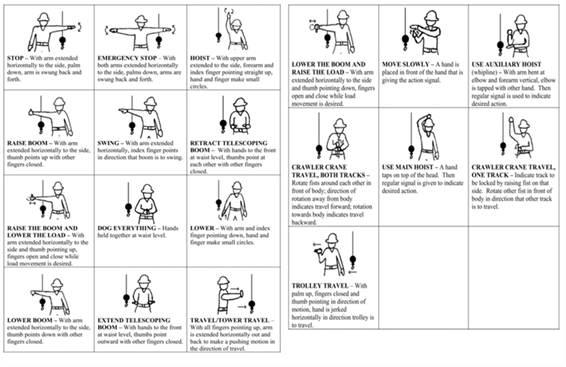By: Chris Hall
For years, the crane industry has been plagued by one of the most complex construction issues: Communication. Communication between crane operators and signal persons have lead to a significant number of incidents and personal injuries. Crane operators have long ranked poor signaling as one of their top concerns and when OSHA introduced their new crane standard, they specifically addressed it.
OSHA's new standard now requires that all persons communicating operational instructions to a crane operator must be "qualified" either by the employer or a third party evaluator. This applies regardless of the means of communication that is used, whether it is hand signals, radio, voice, or any other means. In each case, the requirements for qualification are specifically outline in the rule. For a signal person to be considered qualified they must:
- Know and understand the type of signal being used
- Be competent in the application of the type of signal used
- Have a basic understanding of equipment operation and limitations, including swinging loads and boom deflection
- Know and understand the relevant requirements of the general signaling requirements rules
- Demonstrate they meet the above requirements through a written (or oral) test and a practical evaluation
- All qualified signal persons must provide documentation on the jobsite which lists the types of signaling they are qualified for, and if necessary, the language (if it is other than English)
Because there are so many variations of hand signals used for crane operation, OSHA has also listed in the new standard the specific hand signals that must be known by all qualified signal persons. By doing this, they have eliminated the variations of signals that were so common on jobsites. Below are the signals as provided by OSHA.

With enforcement of the new rules, OSHA will be checking documentation of qualified persons and verifying their knowledge. It is important that this aspect of your operations is not overlooked, since it will be an area of focus for years to come.
Related Topics: Monthly Safety Topics, Safety Articles